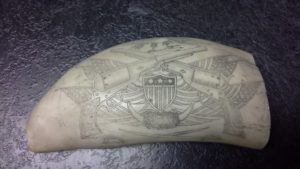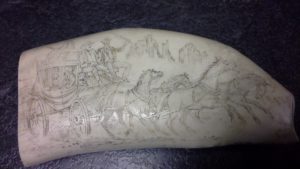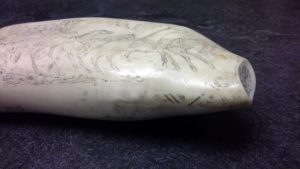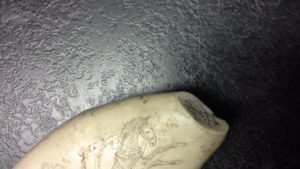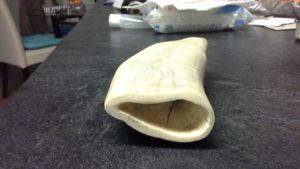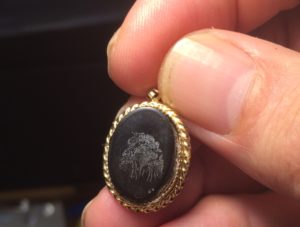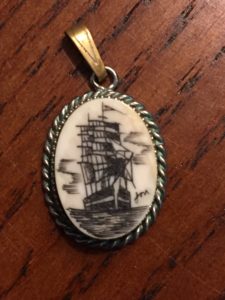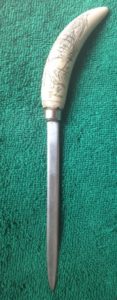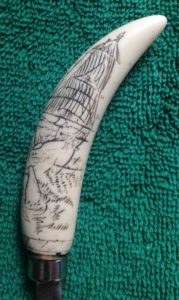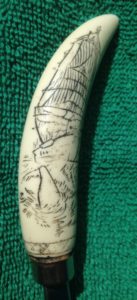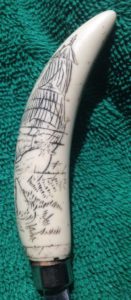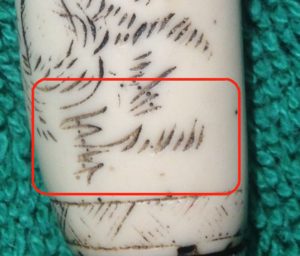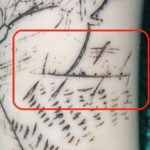Deer Antler Scrimshaw
Antler from deer, moose, caribou and other creatures have been used for scrimshaw, knife handles and more throughout history. Back when resources were scarce, there were only two of the three R’s: Reuse and Recycle – reduce was not an option.
Antler description
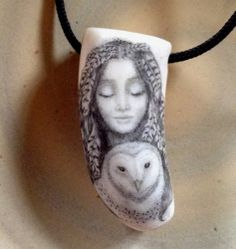
Antlers (in the deer family) are extensions of the animal’s skull that are grown annually. They are true bone, being fed by the animal’s blood and covered by “velvet”: a skin-like covering. With the exception of reindeer and a few other species, only males produce horns (what is the feminine version of Rudolf, anyway?). Shed antler are a favorite of raccoons and other woodland creatures as a source of calcium. Due to the fact that there were capillaries within the antler, small voids remain on the surface of the antler and the material should be sealed either with cyanoacrylate (super glue) or wax after polishing to minimize staining (you find this with most bone as well). We’re looking into other ways of sealing but haven’t had the time to experiment with them yet.
Antler resources
AntlerMan – (amazon) http://amzn.to/1JOshhM
Etsy – http://etsy.me/1ML6l7c
Sanding Antler:
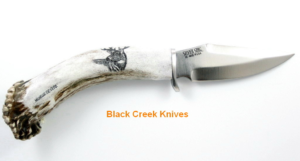
Using proper dust protection (eye protection and dust mask along with dust remediation), cut the antler to the shape and size you intend to scrimshaw. Note: some antler will have a nice outer color, but the inside may be darkened due to the age of the antler. The one I’m working with was from a roadkill of a one year old, and I believe the blood hadn’t entirely left the antler at the time of its demise. [cross-section]
Attempting to create a small “window” to scrimshaw on, I sanded down into the darker area of the antler, making that area look stained. Carefully and lightly sanding only until smooth I was able to work an area further up the antler that should work for a smaller scrimshaw. I sanded the area progressively from 240 grit to 3200 creating a mirror like finish using micromesh pads after the wet/dry sandpaper (available in most hardware stores, automotive stores). Cutting off the previous window, it’s now time to figure out what to scrimshaw.
I settled on a ship since time was short and it was easy to draw free hand (one of the advantages of doing a lot of ships over the years).
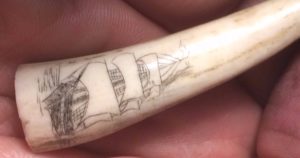
Overall, it came out surprisingly well. Cross-sections tend to stain due to the aforementioned capillaries. If you get a whole antler with the “buttons” (the base of the antler), they can be made into many decorative items. Necklaces can be made from sections of the antler, toggles from either the tips or the cross-sections for coats, knife scales if the antler is thick enough and stand-alone scrimshaws from larger pieces, including moose antler if you’re lucky enough to get some.

